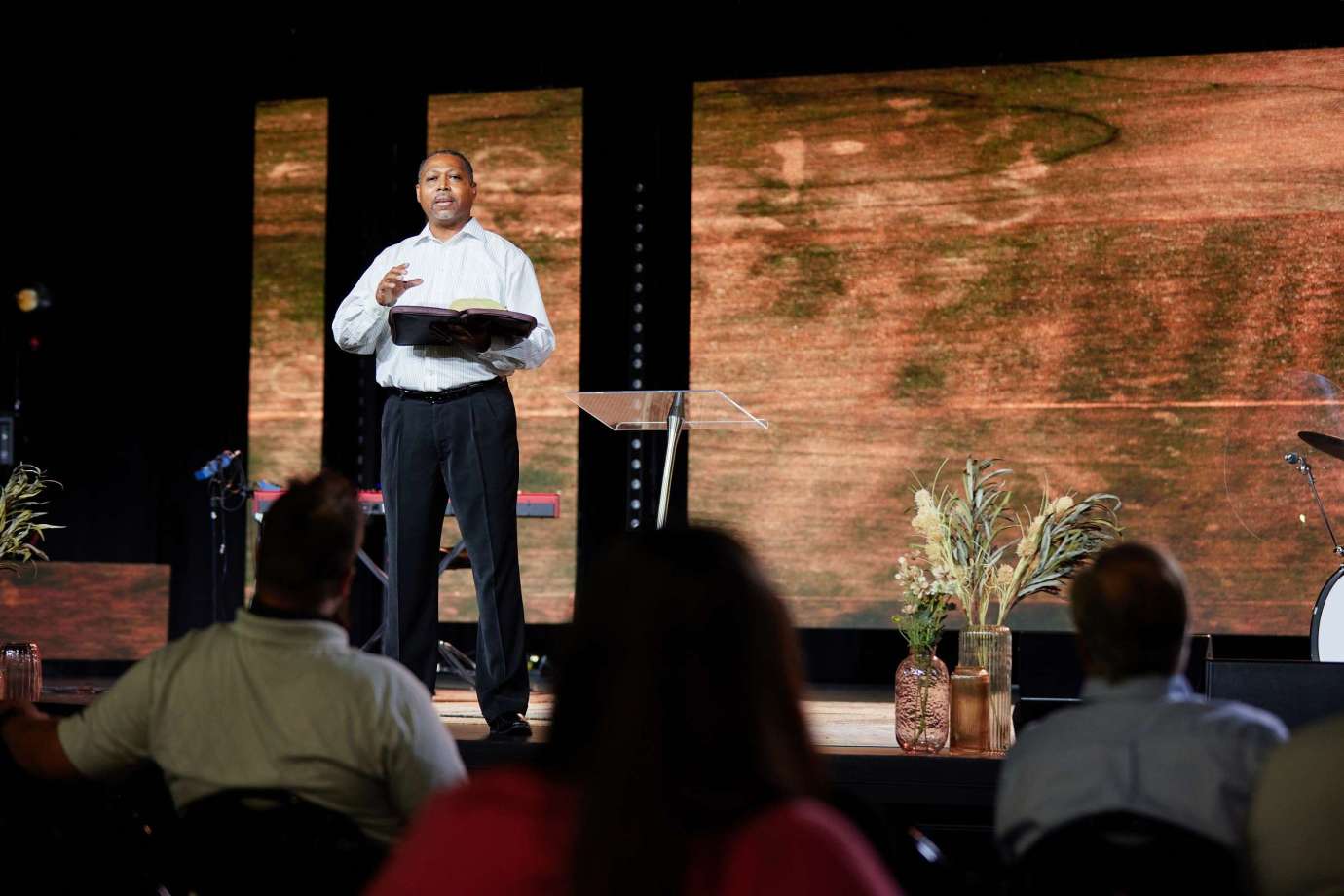EDUC 730 Issues & Trends in Learning Technologies
Course Description
For information regarding prerequisites for this course, please refer to the Academic Course Catalog.
Course Guide
View this course’s outcomes, policies, schedule, and more.*
*The information contained in our Course Guides is provided as a sample. Specific course curriculum and requirements for each course are provided by individual instructors each semester. Students should not use Course Guides to find and complete assignments, class prerequisites, or order books.
Rationale
Over the last few decades, there has been an unmistakable increased interest and adoption of learning technologies for online and face-to-face learning environments. This course seeks to develop research-based understandings and awareness of trends and issues in the broad area of learning technologies to address that need. As part of the required components of the course, the student will explore learning technologies from a scholarly viewpoint and develop instructional assets integrating technology.
Course Assignment
Assigned readings and lecture presentations
No details available.
Course Requirements Checklist
After reading the Course Syllabus and Student Expectations, the student will complete the Course Requirements Checklist found in the Course Overview.
Discussions (4)
Discussions are collaborative learning experiences. Therefore, the candidate is required to create a thread in response to the provided prompt for each discussion. Each thread must be at least 300 words, demonstrate course-related knowledge from assigned readings and presentations, and have its assertations supported with at least 2 research articles in current APA format. In addition to the thread, the student is required to reply to the threads of at least 2 classmates with substantive responses. Each reply must be at least 150 words and incorporate at least one scholarly research article in current APA format. The sources cited in the thread and replies must have been published within the last five years. (CLO: A, B, F, G)
Artificial Intelligence: Trends, Risks, and Potential Benefits Assignment
In this assignment, the candidate will explore the topic of Artificial Intelligence responding to one of three options of most interest. Staying informed and actively engaging in the conversation surrounding AI is crucial for shaping a future where AI aligns with our values and strengthens our societies. Robust ethical frameworks, continuous dialogue between technologists and policymakers, and public education are essential focuses to ensure that AI benefits all of humanity. After choosing between one of the three assignment options, the student will follow the four steps provided within the assignment instructions based on the option the student chose, providing all requested information and completing the provided template as instructed. At the end of the template document, the student will provide an APA formatted references page for any material cited in the assignment. (CLO: E, F)
STEM, Robotics, Coding, and Maker’s Spaces Overview Assignment
Maker’s spaces and personal manufacturing present a fascinating future for education with some tantalizing possibilities. The barriers to adoption are real but worth overcoming for the potential benefits. STEM, Robots, Coding, and Maker’s Spaces are increasingly seen as ubiquitous with the educational experience in classrooms. In this assignment, the candidate will explore each of these four topics from a local context perspective, examining significance, barriers, practices, and implications for teaching and learning. Using the provided template, the candidate will write a 2-3 paragraph introduction and provide a brief overview of each of the four initiatives. Then, the candidate will respond to each of the follow-up questions in the template for each initiative and provide at least one local resource for each initiative. The candidate will include a minimum of 2 scholarly references for each initiative, for a total of eight. The references must be published in the last five years, relevant to the given initiative, and cited in current APA format. (CLO: A, B, F)
Apps and Young Users: Warnings and Safeguards Assignment
Collaboration and communication apps have become ubiquitous with everyday life, but there can be both risks and benefits to using these web based tools, especially for children and teens. Apps noted as dangerous for children and teens include Snapchat, Whisper, Blendr, and WhatsApp, yet several of these apps are used to good advantage by many. For this assignment, the candidate will plan and conduct a 10-minute presentation for parents on the possible dangers of social media apps targeting children. For this presentation, the candidate will identify three or more apps of particular concern for educators and parents. The candidate must also present information from both the Federal Bureau of Investigation (FBI) and his/her state’s attorney general to support his/her claims and discuss warnings and safeguards that should be in place for child safety. The candidate will conclude the presentation with endorsements of the best parental monitoring tool and content blocking tool. The presentation must be created using PowerPoint or Google Slides, and audio narrations must be included in the presentation. The student will use current APA formatting for citations. To submit the assignment, the candidate will generate a shareable link to the narrated presentation either through OneDrive (for PowerPoint) or through the sharing features of Google Slides/Google Drive. (CLO: C, E, F)
Instructional Video Project Assignment
Instructional videos provide on demand learning opportunities and are an important aspect in personalized learning. For this assignment, the candidate will develop an instructional video that in which the he/she is explaining, demonstrating, or teaching a skill. The candidate will capture three sperate video segments using an actual video camera. The candidate will edit these three segments together to produce a quality 4-6 minute instructional video in live action. One the video is complete, the candidate will upload it to YouTube and share the link as part of the Instructional Video Project Template. The candidate must also fill out the info in this template to describe various elements of producing the video. (CLO: C, E)
Technology Integration Learning Plan Assignment
In this assignment, the candidate will design a technology integrated learning plan for a specific audience of learners using the 5 E model and the ASSURE model for instructional design. The instructional session is designed for a 50-60 minute lesson. The Technology Integration Matrix (TIM), the ASSURE model for instructional planning, and the ISTE standards provide frameworks to help the candidate define a well-conceived technology integrated learning plan. Plan preparation involves determining the audience, outlining the learning experiences, and selecting digital resources, interactives, case studies, or simulations. Using the provided template, the candidate will complete all sections as described within the assignment instructions. The paper must be at least 8 pages and must include a minimum of three scholarly references in addition to primary (i.e., not secondary) sources for TIM, ISTE, and ASSURE. The paper should be formatted according to current APA standards. (CLO: A, B, D, E, F)
Challenges and Possibilities Paper Assignment
In this 8–10 page paper, the candidate will explore emerging themes in the field of educational technology and elucidate educator perspectives in order to project future directions of educational technology trends while also grappling with several current issues facing the field. In order to write this paper, the candidate must follow the provided template, including all the requested information and following all listed instructions. The candidate will use recent editions of the Horizon Report, information gleaned from Gartner’s Hype Cycle, and recent scholarly literature to support the paper’s content.The paper must be supported by at least 10 scholarly sources published within the last five years. The paper must be in current APA format. (CLO: B, E, F)
Reflection Paper Assignment
In this 1–2 page paper, the candidate will reflect on the understandings gained through the course in light of biblical principles, specifically reflecting on the admonition in Philippians 4:8 to think on things that are true, noble, right, pure, lovely, admirable, excellent, and praiseworthy and how this admonition relates to technology integration in today’s classrooms. Additionally, the candidate will reflect on the learning experiences of the course, identifying the most challenging aspects and the most important lessons, as well as the learning experiences that were most fun or interesting. Finally, the candidate will formulate at least two specific suggestions for improving the course content and learning experiences for future offerings. The paper itself must be formatted according to current APA standards. (CLO: B)

Have questions about this course or a program?
Speak to one of our admissions specialists.
Inner Navigation
Have questions?
